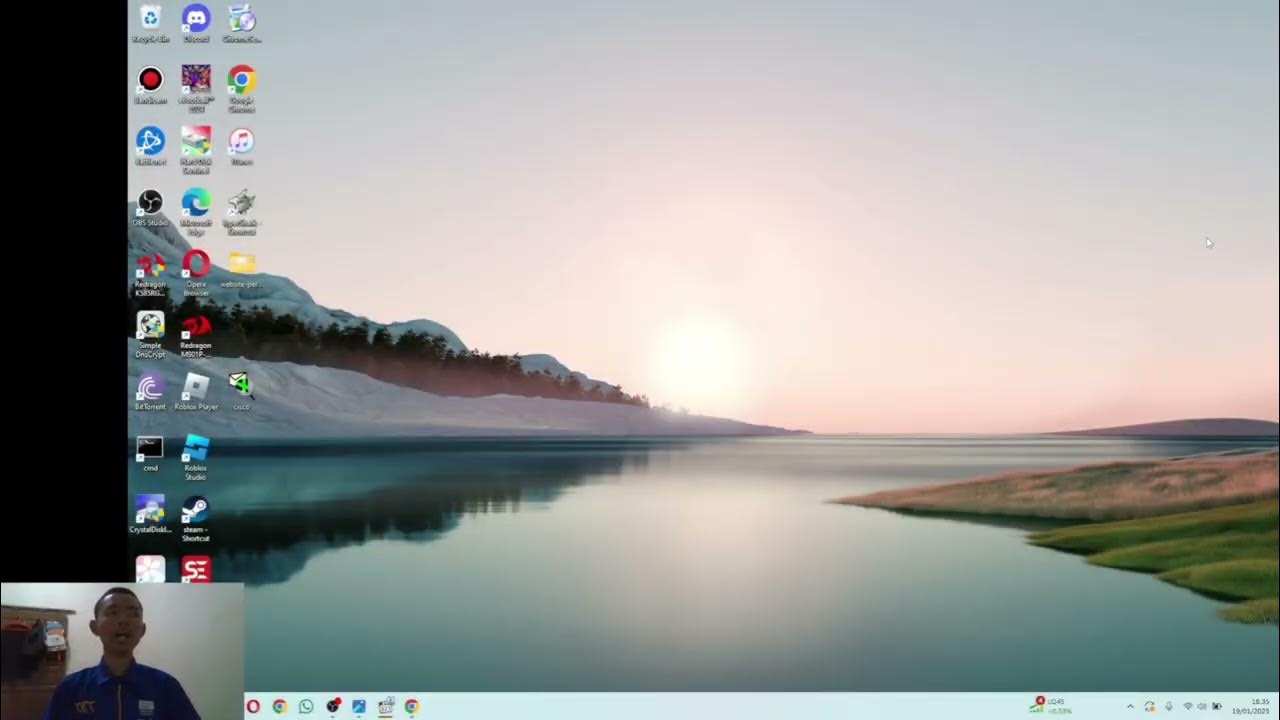3.6 Principles of Congestion Control
Summary
TLDRThis video offers an in-depth overview of congestion control in computer networks, explaining its causes, costs, and basic principles. It distinguishes congestion control from flow control, focusing on the problem of multiple senders overwhelming network capacity. The video outlines two key approaches to managing congestion: an end-to-end method where congestion is inferred by lost packets or delays, and a network-assisted method where feedback is provided. Through scenarios, it highlights how congestion can lead to retransmissions, wasted resources, and even a complete collapse in throughput. The next section will explore how TCP implements these principles.
Takeaways
- 📈 Congestion control focuses on understanding the causes and costs of congestion in networks, while offering two basic approaches to address it.
- 📊 Congestion happens when too many sources send too many packets too fast, exceeding the network link's capacity, leading to delays, buffer overflows, and packet loss.
- 🖥️ Congestion control involves managing multiple senders, whereas flow control deals with a single sender and receiver's speed matching.
- 📉 When arrival rates exceed transmission rates, queues build up, causing delays and eventually packet drops if buffers overflow.
- ⚠️ Retransmissions are necessary when packet loss occurs, but they consume additional network resources, leading to inefficiencies.
- 🔄 With finite buffers, retransmissions can further reduce throughput, especially when unnecessary retransmissions are caused by premature timeouts.
- 🌐 In multi-hop networks, lost packets waste upstream network resources like buffers and bandwidth, reducing overall network efficiency.
- 🚫 Congestion collapse can occur when excessive retransmissions overwhelm network capacity, leading to zero throughput in extreme cases.
- 🔧 TCP employs two main methods for congestion control: implicit detection through packet loss or delay, and network-assisted control where explicit feedback indicates congestion.
- 🛠️ Modern versions of TCP combine end-to-end congestion control with network-assisted techniques for more efficient management of network traffic.
Q & A
What is the primary focus of the video in relation to congestion control?
-The primary focus of the video is to provide a big-picture understanding of congestion control, including its causes, costs, and two basic approaches for handling congestion.
What is the difference between congestion control and flow control?
-Congestion control deals with multiple senders sending too many packets too fast for the network to handle, while flow control is about speed matching between a single sender and a single receiver.
What happens when the arrival rate of packets exceeds the transmission rate of a network link?
-When the arrival rate exceeds the transmission rate, queues start to build up, leading to larger delays. If the link's packet buffers fill up completely, incoming packets will be dropped and lost.
How does the throughput behave when the sending rate increases under the assumption of infinite buffering?
-With infinite buffering, no packets are lost, and the throughput at the receiver equals the sender's sending rate. However, when the arrival rate approaches the link's capacity, queuing delays increase.
What is the distinction between 'lambda in' and 'lambda in prime' in the context of congestion control?
-'Lambda in' refers to the rate at which original data is sent from the application layer, while 'lambda in prime' includes retransmissions and represents the overall rate at which packets arrive at the router.
What happens to the throughput in the case of finite buffers and packet retransmissions?
-With finite buffers, when packets are lost due to full buffers, retransmissions occur. As a result, the receiver throughput no longer increases one-for-one with the arrival rate, and the maximum throughput is less than the link's capacity due to retransmissions consuming resources.
What is the impact of unnecessary retransmissions caused by premature timeouts?
-Premature timeouts lead to unnecessary retransmissions, where duplicate packets are received at the destination. This results in a drop in maximum throughput since the network is carrying extra, unneeded packets.
In a multi-hop scenario, what is the effect of upstream packet loss on throughput?
-In a multi-hop scenario, if a packet is lost downstream (e.g., at the second router), all the upstream resources (buffering, bandwidth) used to transmit that packet are wasted. This leads to inefficiencies and can cause end-to-end throughput to drop to zero if congestion is severe.
What are the two basic approaches to congestion control discussed in the video?
-The two basic approaches to congestion control are: 1) an end-to-end approach where the sender infers congestion from lost packets or delays and adjusts its sending rate, and 2) a network-assisted approach where the network provides explicit feedback about congestion to the sender.
How does TCP implement congestion control according to the video?
-TCP primarily uses the end-to-end approach, where the sender infers congestion through events like packet loss or increased RTT. In some versions of TCP, a network-assisted approach is also used, where the network provides feedback to help control congestion before packet loss occurs.
Outlines

Cette section est réservée aux utilisateurs payants. Améliorez votre compte pour accéder à cette section.
Améliorer maintenantMindmap

Cette section est réservée aux utilisateurs payants. Améliorez votre compte pour accéder à cette section.
Améliorer maintenantKeywords

Cette section est réservée aux utilisateurs payants. Améliorez votre compte pour accéder à cette section.
Améliorer maintenantHighlights

Cette section est réservée aux utilisateurs payants. Améliorez votre compte pour accéder à cette section.
Améliorer maintenantTranscripts

Cette section est réservée aux utilisateurs payants. Améliorez votre compte pour accéder à cette section.
Améliorer maintenantVoir Plus de Vidéos Connexes

Materi Jaringan Komputer - Informatika

Tentang Jurusan SMK - Teknik Komputer dan Jaringan

Reti Lan-#1.Definizione di rete Informatica (LAN , MAN , WAN ,GAN)

Introduction to Generative AI

MATERI (NETWORK FUNDAMENTAL) || CISCO || IT || NETWORK ENGINEER ||

Perangkat Jaringan Komputer dan Media Transmisi | Network Fundamental Learning Series #3
5.0 / 5 (0 votes)
